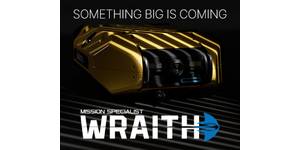Marine Technology Reporter Blogs - sonar
Autonomous Surface Vehicle’s C-Worker USV

The C-Worker is an unmanned surface vehicle (USV) designed for offshore services in the O&G industry. The multi-role offshore USV is designed to conduct subsea positioning, surveying and environmental monitoring without the need of a ship on station or seabed anchoring. Autonomous Surface Vehicles Ltd (ASV Ltd) is a UK company and part of Global Fusion, a privately owned international marine services group based in Lafayette, Louisiana, USA. The small robust design incorporates an aluminum self-righting hull that makes the vehicle suitable for harsh ocean environments. At only 5.85 meters in length, a beam of 2.2 meters and a height of 4.75 meter with its mast extended, this USV is a much cheaper and compact option for some offshore jobs that today are done by much larger vessels.
SeaBED-class AUVs – The Deepwater Imager

The SeaBED AUV, developed by WHOI scientist Hanumant Singh and colleagues, is an AUV that can fly slowly or hover over the seafloor to depths of 6,000 feet (2,000 meters), making it particularly suited to collect highly detailed sonar and optical images of the seafloor. SeaBED flies about 8 feet (2.5 meters) above the seafloor, flashing its strobe light and snapping a photo every three seconds. It maintains a constant altitude and speed of a ½ knot. Over the last seven years SeaBED-class AUVs have shown their versatility on missions ranging from shallow coral reef surveys to searches for deep-sea hydrothermal vents, in environments ranging from the open ocean to the dense ice cover of the Arctic.
New Impulse for Fisheries in Rio
The fisheries industry in Rio de Janeiro particularly and in Brazil in general, has historically received few investments from the government or the private sector. In reality, even fisheries monitoring, regulations and inspections are lax, at best. Many species have become basically extinct, such as the large lobster. This many soon begin to change. Recently the environmental secretary for Rio de Janeiro, Carlos Minc, announced that investments in fisheries and aquaculture will be included as part of the demands for local environmental licensing. This will be mostly directed to industrial environmental licensing in the north part of Rio but will eventually be an integral demand in all environmental licensing procedures along the coast of Rio.
Hydroid´s Remus 6000

The Remus 6000 AUV was designed and developed by a partnership between the Naval Oceanographic Office, the Office of Naval Research and the Woods Hole Oceanographic Institute (WHOI). The Hydroid Inc, is young company, which was founded in 2001 by the inventors of REMUS to commercialize their product and to allow this ultra-deepwater AUV technology to reach a wider market and to guarantee funding for continuous product development. The REMUS AUV is the product of over 15 years of leading edge research and development. The REMUS 6000 is the deepwater version of the acclaimed Remus 100, lightweight, shallow water AUV and the Remus 600 deep water AUV.

 August 2025
August 2025



